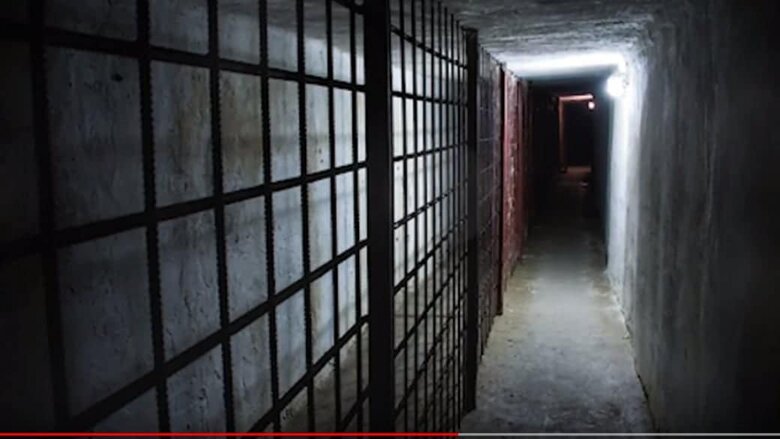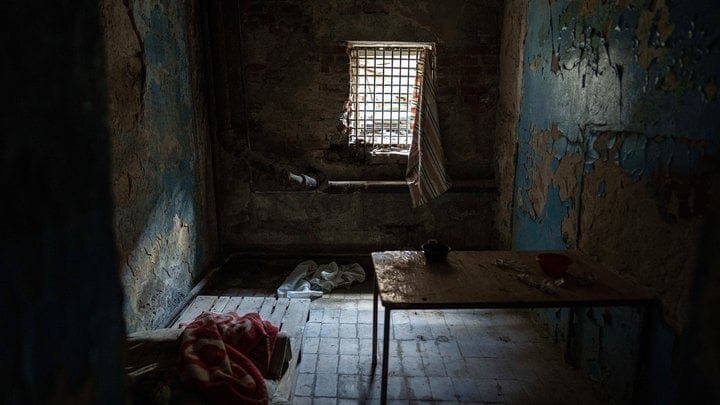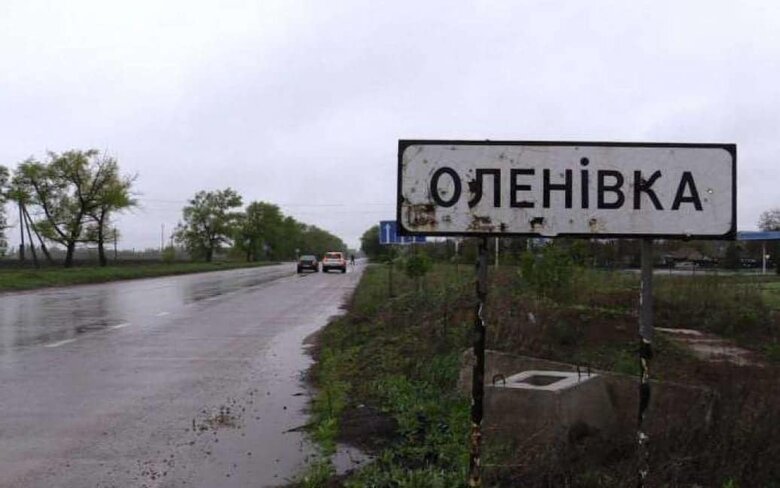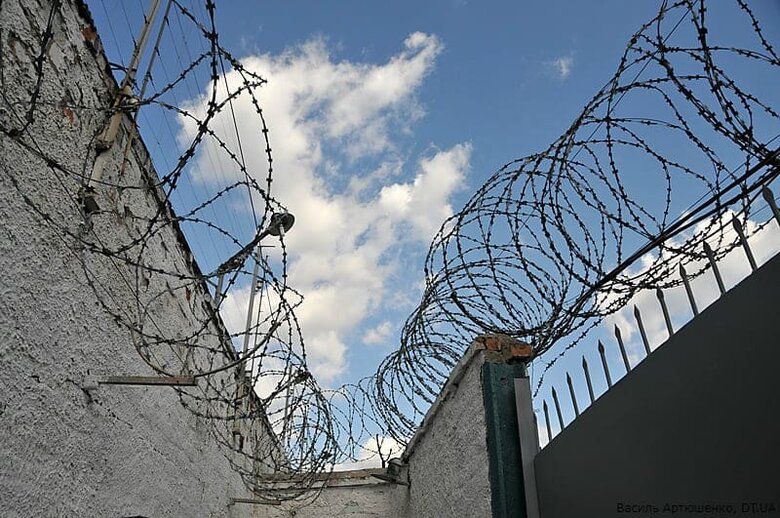Sorting for survival: what filtration camps hide
For almost three years of war, the Russians have created a whole system of filtration measures against the civilian population of Ukraine in the occupied territories. Using the illegal armed groups and regular troops under their control, as well as law enforcement and judicial bodies, they forcibly detain, detain and unlawfully convict Ukrainians on false grounds and with fabricated evidence.
All this is accompanied by numerous human rights violations, physical violence and psychological pressure.
The phenomenon is so widespread that the International Criminal Court has identified the investigation of such crimes as one of its priorities for 2024-2025.
According to preliminary data from law enforcement agencies, tens of thousands of people have been filtered. Thousands ended up in detention centres. National Police investigators are investigating these crimes against civilians illegally deprived of their liberty and held in detention facilities in the temporarily occupied territories and in the Russian Federation as part of a main criminal proceeding on the grounds of violation of the laws and customs of war (Article 438 of the Criminal Code of Ukraine).
Oleksandr Shapovalov, Head of the Department for Documentation of Crimes Committed in the Context of Armed Conflict of the Main Investigation Department of the National Police of Ukraine, spoke in an interview with Censor.NET about the role of filtration measures during the war, how interrogation centres and filtration camps are equipped, what means of physical and psychological pressure Russians use against civilians, and the investigation of such crimes committed against our citizens.
- When the Russians seize some territories, they carry out so-called filtration measures. And some people who do not pass them end up in so-called filtration camps. What role do such camps play during the war?
- Filtration is a rather extensive process. With the support of the military and political leadership of the Russian Federation, the Armed Forces of the Russian Federation, other armed groups under its control, and with the involvement of militants from the LDPR terrorist organisations, a whole system of filtration measures has been created. It is aimed at identifying people, reducing the size of our population and further destroying the Ukrainian nation.
The filtration begins at the checkpoint, followed by interrogation centres, torture chambers, and then filtration camps where people are sent. In other words, people with a pro-Ukrainian position are "sorted", "worked on", and those who are disloyal to the invaders are taken away.
In addition to the military and representatives of other armed formations, the Federal Security Service, the Federal Penitentiary Service, the Investigative Committee of the Russian Federation, police officers, prosecutors and judges play their roles in this process.
All these bodies work closely together to create a mechanism for illegal detention and prosecution.
For example, the FSB conducts detentions and forms charges based on falsified materials and what they hear from a person during interrogation and torture. Investigators formalise all these criminal cases using "evidence" obtained under physical and moral pressure.
Prosecutors accordingly support the charges in court to secure convictions. Judges, in turn, make politically motivated decisions that are beneficial to the state policy of the Russian Federation.
- Who is responsible for setting up filtration camps?
- Each filtration camp has supervisors from the Federal Security Service and the Federal Penitentiary Service of the Russian Federation.
For example, we have already sent a criminal case to the court, in which charges were brought against the FSB supervisor of one of the districts of the temporarily occupied territory, a Russian citizen and son of Yanukovych's former chief of security, Zanievskyi. He personally tortured people and participated in detentions. In addition, the curator of the Federal Penitentiary Service in the largest filtration camp in the temporarily occupied territory of Ukraine was identified.
- What do Russians pay attention to during filtration measures?
- They track pro-Ukrainian citizens, look at tattoos, look at messengers on phones, and fully identify the person. Sometimes they enter the territory with lists of people to detain. For example, this was the case in the Kyiv region. The Russians had prepared lists that included participants in the anti-terrorist operation, former and current law enforcement officers, local deputies, journalists, teachers, volunteers, and public figures. They used these lists to detain people, and many of our citizens are still being held by Russia in places of detention.
- If a person is not on such pre-prepared lists, but simply lives in the occupied territory. Will they be checked only if they want to leave?
- There are different cases. In particular, when leaving. People are subject to appropriate checks (checkpoints, interrogation centres). For example, as it was in Mariupol, Kherson and Zaporizhzhia regions, when people could not stand the constant shelling, could no longer live in fear, so they tried to leave either to the territory controlled by us or to Russia. And there were situations when a family left. The wife was released after the inspection, and the husband was detained because he was either a volunteer or a journalist, or he simply had some tattoo on his body.
But there were also cases when people came home and forcibly took the person first to interrogation centres and then to places of detention. The fate of some citizens is still unknown to us.
- If they come home, they also call it filtration measures.
- Yes, the filtering system built by Russia is a large repressive machine. They identify people who have worked in government agencies, who help the Ukrainian armed forces, who support the Ukrainian government, relatives of those who serve in the Ukrainian army or work in law enforcement agencies. They are also taken to interrogation centres.
During the filtering process, searches, photography, questionnaires, and naked body searches for tattoos and weapon marks are carried out. Fingerprints are also taken, and then the person is interrogated, the content of messages on the phone and social media pages is examined.
- What is the difference between interrogation centres and torture chambers?
- In interrogation centres, people can be interrogated and released. Or they can interrogate a person and move them to a torture chamber.
We have already recorded 107 places of illegal detention in the de-occupied territories. These include interrogation centres, torture chambers and filtration camps.
- How are interrogation centres equipped?
- It varies. It can be a room at a stationary checkpoint where an FSB representative sits and conducts the interrogation. Or it can be a stationary district police department, where a person is placed in more severe conditions, for example, in a basement. Where, as they say, they "carry out" the relevant work with him or her. This can include torture with electric shocks, sexual and physical violence. Moral pressure and other types of torture are also used.
- If people are travelling to Russia, why are they being forced to go through filtration measures?
- In such cases, they consider it a security measure for their country. And they are carried out in order to identify the person who wants to enter the territory of Russia, to study his or her lifestyle, to find out who he or she was before.
Moreover, not everyone goes to Russia to stay. Some go to Russia not because of ideological beliefs, but because it is closer in distance. Then they try to go to the European Union, and from there many return to Ukraine.
- They had taken people before, back in 2014. Are such cases also being investigated?
- Yes, because these people are still being held in detention on trumped-up charges of espionage, alleged involvement in terrorist organisations, etc. By 2022, 124 civilians had been released, and we had already interrogated them. We understand where they were held. These are the temporarily occupied territories - Donetsk ("Izoliatsia" prison, MSS premises), Horlivka, Luhansk, as well as colonies in the Russian Federation - Kursk, Bryansk, Rostov-on-Don, Novozybkiv and others. There are a lot of such camps - about 50. We are also finding out how and where they are being moved. Because the people we managed to return say that some of them had to go through 5-7 filtration camps.
After the full-scale invasion, we managed to release 521 civilians. We are also conducting a full range of investigative and operational activities with them to establish the place where they were held, to identify the people involved. They are always asked who was with them, whom they saw. Because there are a lot of people who are illegally detained and whose fate is unknown. This is when there are no criminal proceedings at all, a person is simply held without telling anyone anything about him or her. And these can be not only Ukrainian citizens, but also foreigners, including journalists.
- Analysing what you are told, do you understand which civilians are most often detained? I mean social status, profession.
- Most of them are participants of the anti-terrorist operation. Most civilian hostages are held by Russia without charge.
- How are filtration camps set up?
- They were created on the basis of institutions that were part of our penal system before the occupation of the territories. These are Luhansk and Donetsk regions and the Autonomous Republic of Crimea. At the same time, they do not separate civilians and military personnel, and can hold everyone together in one camp.
During the investigation, we also establish who works in these institutions. Since 2014, there have been a lot of changes in officials there, but we are recording all this. This is a painstaking job, but we must identify everyone who illegally detains and tortures our citizens, keeps them in inhumane conditions, and commits violence. Many of them have already been notified of suspicion.
- Are there any instructions for what happens there?
- We are trying to find out, including for the International Criminal Court, because we work closely with them. And they ask us questions about the documents used by the Russians, whether there are any instructions or orders on the detention of civilians that they follow.
- It is known from open sources that there have been cases when men who remained living in the territory captured by Russian troops were brought to such filtration camps. Are they then forced to serve in the army?
- There is also such information. Some people are offered positions in the temporarily occupied territories. For example, if a person worked in local government before the occupation, they may be offered to return to their duties. There are those who have accepted. We also track collaborators and serve them with suspicion notices.
- How do they treat pensioners and seriously ill people undergoing filtration measures?
- There are no vulnerable categories for them. They treat everyone very harshly.
- Is there evidence of the use of filtration camps to prepare for forced labour?
- Unfortunately, civilians are indeed used for forced labour. For example, digging trenches, removing corpses from the battlefield, performing heavy work. We also record such cases.
- What do people generally say about the conditions of detention?
- The conditions are terrible. You can't sit on the bed during the day, you have to stand all the time. If you sit on the bed, they immediately beat you with truncheons and kick you.
- What are the most common methods of psychological and physical pressure?
- Electric shocks, beatings, sexual and physical violence. Many people are sexually abused. Both women and men. Therefore, after the exchange, all those who were returned must undergo rehabilitation.
In addition, most lose a lot of weight, people lose their hearing and eyesight, and all have chronic diseases.
- Do you know of any situations where people could not stand such abuse?
- Yes, there are people tortured and killed, but the Russian side does not officially report such facts.
The stories of the people who managed to escape are horrific. People are brought to the filtration camp, thrown out of the convoy car, they go through a "human corridor", they are beaten with truncheons, metal pipes, bats, and dogs are set on them.
They lose weight because the portions are very small. They say that they were brought hot food and given them 3-4 minutes to eat it. That's why they all have burns of their mouths.
In winter, they are mostly kept in the cold. As for the cells, many of them don't even have windows. And people are kept there at minus 20.
They also said that some of them did not have beds. So they slept on the floor.
They use various forms and methods to abuse our people.
- Currently, the National Police investigators are serving a lot of suspicions on those who have been identified, and the courts are passing sentences. But this is all done in absentia. Will we ever see such war criminals in prison?
- Such crimes have no statute of limitations. They will be brought to justice at any time.
- There are no international warrants for them, are there?
- We don't have it now. But we are working on this issue.
Tetiana Bodnia, "Censor.NET"






